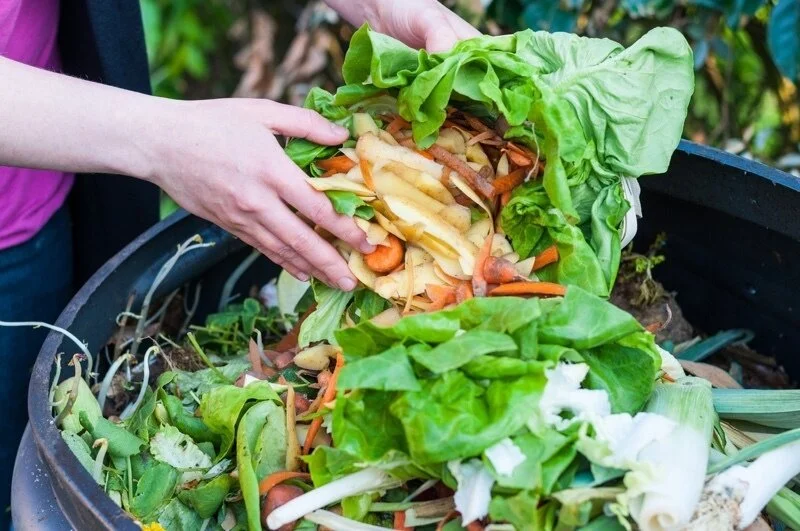A Beginner’s Guide to Composting
Originally published by StyleBlueprint.
With the beautiful weather rolling in, getting outside is a must — especially if you have a garden or you want to start one. To keep your plants blooming their best, consider composting. Not only does composting create nutrient-dense fertilizer for your garden, but it helps reduce the waste going to landfills and cuts down on methane emissions. We talked to Leah Sherry and Ali Hadd of Nashville’s Turnip Green Creative Reuse to learn more about composting and to get their tips and tricks for how to get started with this earth-friendly habit.
The Benefits
The astronomical amount of waste going to landfills is no secret. In Nashville specifically, the waste problem could force Davidson County to a new landfill — double the distance of the current one. According to Metro, one-third of what goes into this landfill is compostable material. “If you’re talking about toxicity, food waste and organics are some of the most toxic items in the landfill,” Leah says. “The landfill doesn’t have oxygen, so things like a banana peel can take up to two years to decompose even though it’s an organic material.” Because the banana peel isn’t being decomposed efficiently, it produces higher levels of methane than it would if it were to decompose naturally. By composting when possible, we lessen this negative impact on the environment.
Beyond the environmental benefits, composting has upsides for individuals as well. “You’re buying fewer trash bags, spending less time taking out the trash and cutting down on the smell of organics in your trash can,” Ali adds. The compost can then help support a garden or even just your favorite tree. Composting can be good for the earth, good for your lifestyle and good for your garden!
How it Works
Composting recycles scrap organic material into nutrient-rich fertilizer through decomposition. This process occurs on its own in nature, but with a little human help, it can create a healthy lawn and garden year-round. There are four main types of compostable material, according to Ali. These include kitchen scraps, yard waste, paper and natural fibers. Kitchen scraps can mean anything from fruit and vegetable skins to eggshells and coffee grounds. Yard waste could be grass clippings, leaves or twigs. Paper includes things like pizza boxes and napkins. Natural fibers are any naturally occurring materials like cotton or pet hair.
The key to composting is finding a balance between the types of items you put in your bin. Ali separates the materials into what she considers “greens” and “browns.” “Greens produce moisture, whereas browns are dryer,” she said. “Balancing the greens and browns creates a good environment for the good bacteria to start breaking down materials. We like to use one part green to two parts brown.”
How to Get Started
The first step in setting up a successful compost is to choose a spot you don’t mind going. “When people don’t compost, it’s because it’s not convenient,” Ali says. “So put it in a convenient spot where you’ll remember.”
The spot you choose will determine the kind of bin you’ll need. There are numerous bins on the market for any level of composter, but Ali encourages making the most of your resources. “You could compost in a pile in your backyard, but if you contain it in something plastic, it’ll move quicker,” she says. “People can turn Tupperware into composting bins if they want. You just need one part green to two parts brown, and you’re good to go.” Ali also recommends putting the greens under the browns to avoid any odors the decomposition process might create.
Almost any schedule can accommodate a compost bin since nature does the majority of the dirty work. “If you’re not trying to make it as fast as possible, about an hour a week is sufficient,” Ali says. “The normal person will find a substantial amount in a couple of months, but once it’s set up, it goes quicker.”
The speed of the process depends on how invested you are. To speed things up, try chopping the materials into smaller pieces so they’ll be exposed to more oxygen. Over time, you’ll learn more tricks to make composting fit your lifestyle. “For my greens, I keep a little bag in my freezer so I don’t have to run out to my composter every time I cook,” Ali says. “Then once a week when my cutting board is already dirty, I’ll run them out.”
Composting doesn’t have to be hard or intimidating. Doing a bit of research and asking questions can make all the difference. Turnip Green Creative Reuse even offers composting workshops to make sure you have all the knowledge you need. “Use your resources,” Leah says. “We have over 60 teachers at Turnip Green, and any time someone has a question, I can connect them to the person with the best answer. Anyone can do this!”
Happy composting!
